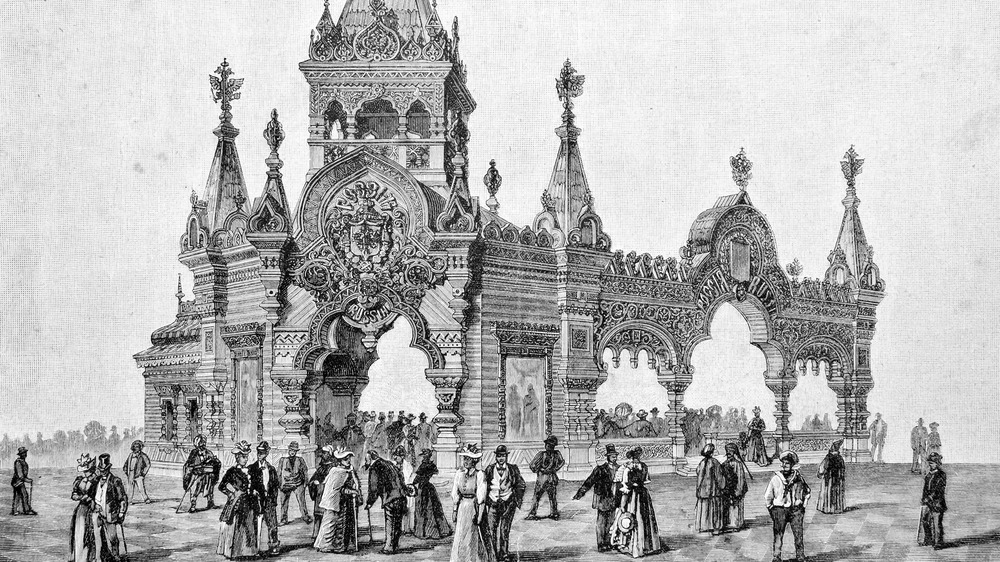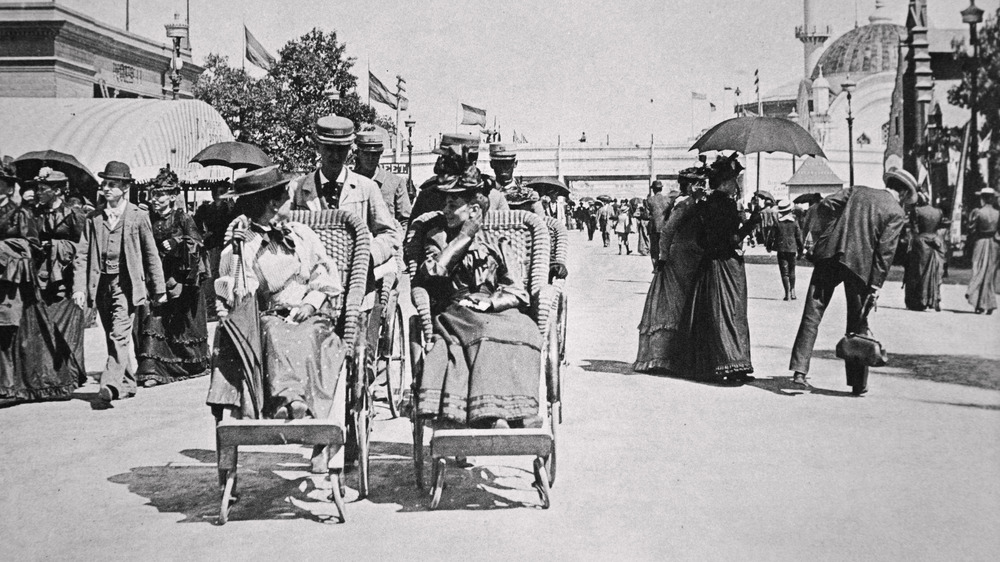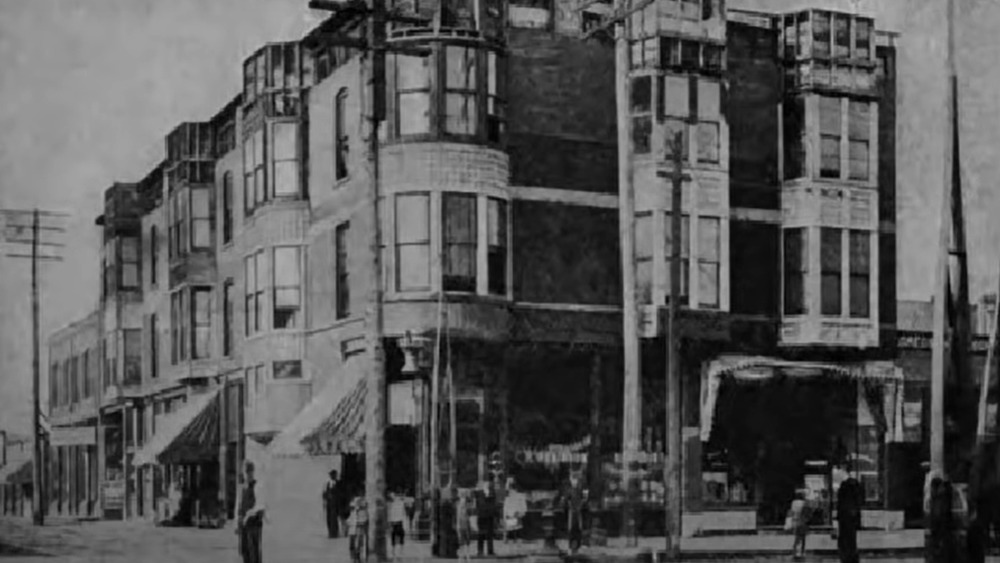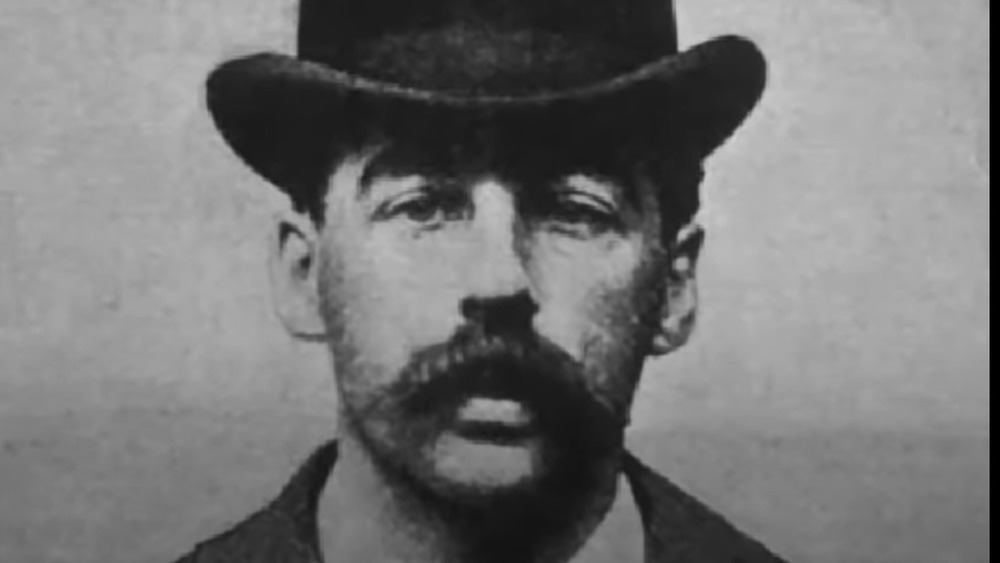The Notorious Serial Killer With Ties To The 1893 World's Fair
Chicago's 1893 World's Fair: Columbian Exposition was a triumph of firsts. In its six-month run, more than 27 million people came to see and experience things they never had before, including the introduction of the Ferris wheel (which, at 264 feet tall and capable of holding more than 2,000 passengers must have been terrifying), peanut butter (who knew it had to be invented?), and PBR (that's right, they earned the "Blue Ribbon" here). With more than 40 countries exhibiting, it seemed like you could see nearly anything — even life-size recreations of Christopher Columbus' Nina, Pinta, and Santa Maria — and countless people did, including notables like Helen Keller and Dr. Alexander Graham Bell.
It was the place to be and countless visitors flocked there from around the world to experience it all. Unfortunately, some of them never made it home. Those unlucky could encounter another first — the man many credit as America's first serial killer.
A serial killer is born
The sordid story begins some 32 years before the World's Fair, with Herman Webster Mudgett's 1861 birth in New Hampshire. Per Mental Floss, as an unpopular little boy, he was often bullied by classmates, including one incident where, after learning about his fear of doctors, he was forced to stand in front of a skeleton. As you'll see shortly, this turned out to be, to put it mildly, a really bad idea and possibly set the stage for future unseemly fixations.
Mudgett eventually left home to attend medical school in Michigan, where he'd begin a sickening pattern of what might be called mutilation for profit. According to Crime Museum, Holmes would steal cadavers (easy enough to access for a med student) and then mutilate or set fire to them. Knowing their identities, the sickeningly crafty Holmes would then take out insurance policies on them, leave the bodies somewhere they'd be found, and then collect the payout on the policy.
After a post-med-school move to Chicago, Mudgett began working as a pharmacist at a drug store — though his employers only knew him by the alias he'd given, H.H. Holmes. Though never proved, stories have circulated intimating that Holmes may have had something to do with the disappearance of the drugstore's owner, a widow whom Holmes claimed "moved to California." Ahem, soon enough, Holmes became the drug store's sole owner. The store's profit enabled Holmes to finally get to work on a big project.
Worst hotel ever, zero stars
Four years before the fair, Holmes began work on a massive three-story hotel that his neighbors referred to as the "castle." With plans that called for, as Mental Floss describes it, "51 doorways that opened to brick walls, 100 windowless rooms, stairs that led to nowhere, two furnaces, and body-sized chutes to an incinerator," Holmes couldn't risk any contractor being on the job for too long, so he fired them often during construction.
Once his hotel was complete, he began placing ads for guests, employees, and...potential wives. One stipulation for any of those who answered the ad was that they had to take out a life insurance policy, obviously a totally normal request from a hotel and definitely not sinister. Still, Holmes had plenty of takers, especially among guests for the World's Fair. Gentleman that he was, Holmes paid the insurance premiums for those policies. It made it much easier to collect once they conveniently "disappeared."
A look at H.H. Holmes' murder castle
The level of disturbed thought that went into Holmes's creation was astounding. According to Crime Museum, Holmes outfitted rooms with soundproofing and even gas lines to efficiently deliver a fatal dose to unsuspecting guests. Imagine checking in to your vacation rental not knowing the whole place was rigged with trap doors, chutes to drop victims directly into the basement, various peepholes, and even a dissection room. Not to mention the stretching rack.
By now you know that murder and profit went hand in hand for Holmes, who was also accused of removing the skin and organs of his victims until only a skeleton (which could then be sold) remained. Would you believe it was good old-fashioned snitching that took Holmes down?
After the fair, Holmes focused on insurance scams he'd concocted with a former cellmate (Holmes had been convicted of trading stolen horses). Though the scams were profitable, Holmes cut his former cellmate, Marion Hedgepeth, out of the deal, leading Hedgepeth to tell police. This, of course, led to a search of the Castle, and Holmes' murder spree was officially finished. No one knows for certain how many fell victim to Holmes, who only admitted to 28 murders. Some believe he killed as many as 200, but we'll never know for certain.
On May 7, 1896, H.H. Holmes was hanged for his crimes. He asked to be buried in concrete for fear of grave robbers who might dissect his body.



